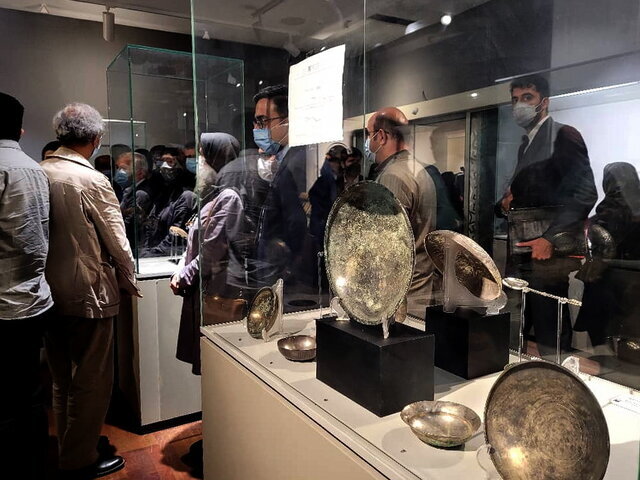Hoard of relics, donated by two Iranian families, on show at Tehran museum

TEHRAN – A hoard of relics, donated by two Iranian families, has been put on show at the National Museum of Iran in downtown Tehran.
“The hoard comprises some 1,500 objects some of which date 7,000 years,” the museum director Jebrael Nokandeh told ISNA on Wednesday.
“Since the collection was handed over to the National Museum almost a week ago, during this time, the archaeological authenticity of about one thousand pieces has been confirmed,” Nokandeh said.
“Determining the authenticity of the other ones requires more detailed research and studies, however, up to the moment, some of which have been proved the lack originality.”
The collection includes objects resembling; Luristan (Lorestan) bronzes; Sassanid silver vessels excavated from northern Iran, and what has been excavated from Kerman’s Shahdad region, the official explained.
Moreover, the collation includes a variety of coins from the Achaemenid era onwards, bracelets, necklaces, crossbows, swords, and arches, the official noted.
The majority of the donated objects are made from iron, bronze, gold, and copper, Nokandeh added.
Luristan Bronzes comprise small cast objects decorated with bronze sculptures from the Early Iron Age, found in large numbers in Lorestan and its neighboring Kermanshah province, in western Iran. Lorestan was inhabited by Iranian Indo-European peoples, including the Medes, c. 1000 BC. Cimmerians and Scythians intermittently ruled the region from about 700 to 625 BC. The Luristan Bronzes noted for their eclectic array of Assyrian, Babylonian, and Iranian artistic motifs, date from this turbulent period.
Lorestan was incorporated into the growing Achaemenid Empire in about 540 BC and successively was part of the Seleucid, Parthian, and Sasanid dynasties.
In many ways, Iran under Sassanian rule witnessed tremendous achievements of Persian civilization. Experts say that during the Sassanid era (224-651 CE), the art and architecture of the nation experienced a general renaissance. In 2018, UNESCO added “Sassanid Archaeological Landscape of Fars Region”, which is an ensemble of Sassanian historical cities in southern Iran, to its World Heritage list. In that era, crafts such as metalwork and gem-engraving grew highly sophisticated, as scholarship was encouraged by the state; many works from both the East and West were translated into Pahlavi, the official language of the Sassanians.
In terms of coins and coinage, according to Encyclopedia Iranica, standardized units of metal used as a medium of exchange were first introduced into Persia during the reign of Achaemenid Darius I (521-486 BC).
The essential advantage of using metals for currency, apart from durability, is that they can be shaped by melting and casting. Casting, therefore, has always been an integral part of the coin manufacturing process.
The Achaemenid [Persian] Empire was the largest and most durable empire of its time. The empire stretched from Ethiopia, through Egypt, to Greece, to Anatolia (modern Turkey), Central Asia, and India.
Chock-full of priceless objects showcasing the juicy history of the nation, the National Museum showcases ceramics, pottery, stone figures, and carvings, mostly taken from excavations at Persepolis, Ismail Abad (near Qazvin), Shush, Rey, and Turang Tappeh to name a few.
The main building of the National Museum, designed by French architect André Godard and completed in 1928, is one of the more attractive modern buildings in Tehran, blending Sassanian principles such as the grand iwan-style entrance with art deco–style brickwork.
Inside, among the finds from Shush, there’s a stone capital of a winged lion, some delightful pitchers and vessels in animal shapes, and colorful glazed bricks decorated with double-winged mythical creatures. A copy of the diorite stele detailing the Babylonian Code of Hammurabi, found at Shush in 1901, is also displayed – the original being in Paris.
AFM

Leave a Comment